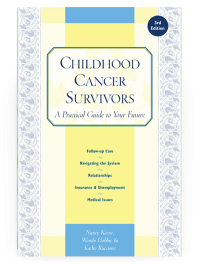Childhood Cancer Survivors
Chapter 3. Relationships
Love looks not with the eyes, but with the mind.
— Shakespeare A Midsummer Night’s Dream
THE TIME AFTER TREATMENT ENDS can involve tumultuous changes in relationships. Every survivor has stories to tell of lost or strained friendships and altered relationships with family members. Yet we are social creatures, reliant on a web of love and support from family, friends, and neighbors.
Cancer is a life-changing experience, and family dynamics inevitably shift during and after treatment. This chapter begins with a discussion about survivors’ relationships with their loved ones. It then covers lost friendships, how survivors make and keep new friends, and romantic relationships. Dating opens up new worlds and sometimes old wounds. Rejection due to health history or altered appearance can occur, but deeply satisfying romantic relationships can develop. This chapter also contains many stories of how and when survivors disclosed their medical history to friends and partners. Finally, the chapter looks at marriage, fertility, health of offspring, and adoption.
Table of Contents
All Guides- 1. Survivorship
- 2. Emotions
- 3. Relationships
- 4. Navigating the System
- 5. Staying Healthy
- 6. Diseases
- 7. Fatigue
- 8. Brain and Nerves
- 9. Hormone-Producing Glands
- 10. Eyes and Ears
- 11. Head and Neck
- 12. Heart and Blood Vessels
- 13. Lungs
- 14. Kidneys, Bladder, and Genitals
- 15. Liver, Stomach, and Intestines
- 16. Immune System
- 17. Muscles and Bones
- 18. Skin, Breasts, and Hair
- 19. Second Cancers
- 20. Homage
- Appendix A. Survivor Sketches
- Appendix B. Resources
- Appendix C. References
- Appendix D. About the Authors
- Appendix E. Childhood Cancer Guides (TM)

